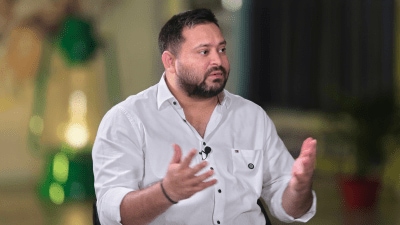Reformed FMPs back in demand
While Fixed Maturity Plans (FMPs) have had a poor run since the beginning of this financial year,now with interest rates...
While Fixed Maturity Plans (FMPs) have had a poor run since the beginning of this financial year,now with interest rates poised to move up demand for these plans has revived. Of the 12 FMPs launched since April,nine have been launched in September and after. And of the Rs 1,600 crore mobilised by FMPs this financial year,Rs 1,400 crore has been collected since September. After investors burnt their fingers during the 2008 debacle (see box: The crisis),these products had fallen into disfavour. Why then are they back on investors radar screens now?
The turnaround
Interest rates poised to move up. With inflationary pressures increasing due to escalating food prices,interest rates are expected to harden. Economists believe that the Reserve Bank of India will first tighten liquidity with a CRR (cash reserve ratio) hike and then follow up with repo and reverse repo rate hikes. These could come anytime between January and June 2010.
When interest rates move up,the net asset values (NAVs) of long-term debt funds get eroded. Investors then have two options either to stay put and wait for the interest-rate cycle to turn,or to move to instruments like FMPs that enable them to capture the gains from rising rates.
Predictable returns. For a part of their portfolio investors want predictability in the returns they will get on maturity. Today that predictability comes in the short term from deposits,bank or corporate,and in the longer term from a few insurance products. FMPs are another category that offers predictable returns over the short term.
Higher returns. Liquid funds offer returns of around 4 per cent,ultra short-term debt funds around 5 per cent,and short-term debt funds around 6 per cent (over a one-year horizon). Over a similar horizon FMPs would give you returns of 6.5 per cent or slightly more (depending on type of paper).
Tax arbitrage. What makes FMPs attractive,especially to investors in the highest tax bracket,is the tax arbitrage available on them. If you invest in a bank deposit,then the interest earned is taxed at the marginal tax rate,which in the case of a person in the highest tax bracket works out to slightly over 30 per cent. In the case of FMPs,the long-term capital gains tax rate (on investments of more than one year) is lower either a flat 10 per cent or 20 per cent with indexation. If your investments are spread over three financial years,then you become entitled to double-indexation benefit (see box for more),which makes them even more tax efficient.
When will you need the money?
Before investing in an FMP,consider your liquidity needs. According to Mumbai-based financial planner Vishal Dhawan,Only investors who are sure that they will keep their money invested for the entire tenure should invest in an FMP. Dont bank on the liquidity available through exchange listing. Trading volumes in listed FMPs are likely to be low (as has been the experience with most exchange-listed funds). And with interest rates likely to move up,they will in all probability trade at a discount. If there is a chance that you may need the money before the 12-14 month horizon,invest in a short-term debt fund instead,suggests Dhawan.
Right investment horizon
FMPs with tenures ranging from five months to five years are available. According to Dhawan,Interest rates are likely to go up. Put 60 to 70 per cent of your money allocated for these products in shorter-term FMPs of less than one year and the balance in FMPs of more than one year. For the latter,Dhawan suggests that while the tenure should be more than one year,they should mature before April 1,2011. A new tax code is being devised that could lead to changes in the way FMPs are taxed. We are asking investors to be cautious about FMPs that mature beyond April 1,2011, he says.
If your investment horizon is less than a year,then the dividend option is most tax-efficient. For FMPs of over a year opt for the growth plan and avail of the indexation benefit.
Choosing the right FMP
Since Sebis reforms,fund houses are not supposed to offer indicative yield on FMPs,nor can they reveal an indicative portfolio at the time of launch. So choosing the right FMP has become harder.
Though an indicative portfolio is not disclosed,the offer document talks about the kind of risk the portfolio will carry low to medium,or medium to high. Look up this document. Says Sitaraman Krishnan,director,Crisil Fund Services: If you are a highly risk-averse investor,you might want to invest in FMPs that only invest in triple-A paper.
Next,decide the duration for which you can spare your money and look for FMPs that are of matching duration.
Thereafter,check the pedigree of the fund house. Choose one that has a conservative style and does not court unnecessary risk.
Next,you would perhaps like to determine the likely returns. Once you have decided on the tenure,check what yield triple-A bonds are offering over that time horizon. An FMPs expenses would be in the range of 25-50 basis points. Reduce this from the yield on triple-A paper. This will give you an estimate. Over a one-year horizon,a triple-A FMP today is likely to give returns of around 6.5 per cent. FMPs investing in lower-quality securities would yield slightly more.
Some FMPs come with a rating from agencies like Crisil (but this is not mandatory). If rating is available,look it up.
While FMPs will not right away capture their former glory they had touched an AUM of Rs 1.4 lakh crore in the latter half of 2008 more FMPs are likely to get launched in the second half of the year. Says Sitaraman: Today the credit quality of portfolios is looking better than a year earlier. Now FMPs dont typically have real estate exposure. That is a clear differentiator. Investors looking for higher post-tax returns may invest in these reformed products.
sk.singh@ expressindia.com



- 01
- 02
- 03
- 04
- 05




























